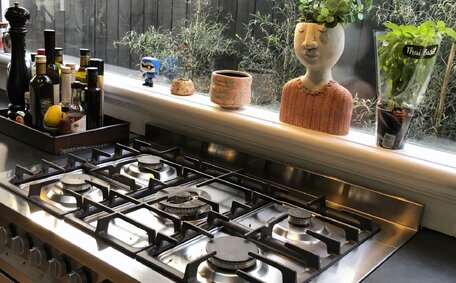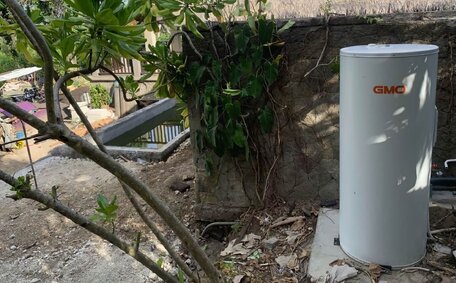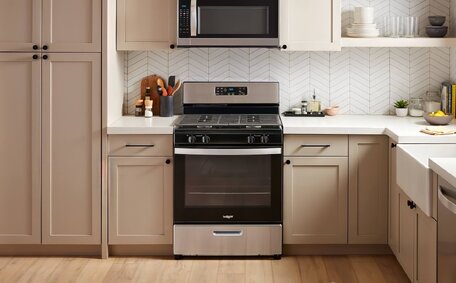
Financial Benefits of Natural Gas
Natural gas offers many financial perks over other energy sources. It burns cleaner and costs less than alternatives, helping lower monthly bills.
Read MoreA functioning pilot light is essential for operating your gas water heater and delivering hot water.
This article will walk you through the necessary steps to safely relight the pilot on your gas water heater. Most homeowners, with basic mechanical knowledge and appropriate safety equipment, can resolve this issue.
We’ll cover inspecting your unit for gas leaks, How to Access the Pilot Assembly, lighting the pilot manually or with the igniter button, and testing to ensure it stays lit.
As your local Sydney plumbers, our goal is to empower you to address basic water heater issues yourself.
However, if at any point you don’t feel comfortable working with gas appliances, don’t hesitate to email us or call 1300 349 338 to schedule a no-obligation quote with our licenced technicians.
Safety is paramount when handling gas appliances. Before attempting to relight your water heater’s pilot, follow these key precautions:
Refer to your owner’s manual to locate the pilot light assembly, typically situated at the base of the tank and linked to the main burner.
Identify a small metal nozzle, typically 3-5 cm long, connected to the gas valve via tubing. This is surrounded by a covering known as a thermocouple, which allows gas flow only when heat is detected. You may also see an ignition electrode nearby to spark the pilot.
Accessing the pilot requires opening your water heater’s front panel, which is typically near the bottom. Your manual will provide the necessary instructions for panel removal. Under good lighting, identify the pilot tube leading from the tank’s base to locate the pilot assembly.
If unable to find the pilot light, email or call Balmain Plumbing at 1300 349 338. Our licenced technicians can inspect your specific model and identify the pilot assembly so you can continue relighting it.
Gas water heaters feature either manual or electronic ignition systems for lighting the pilot. Identifying yours will determine the proper relighting steps.
Manual ignition involves an external flame, such as a match or lighter, to relight the pilot. Procedures for lighting the pilot can be found on a label near the gas valve behind the access panel.
Electronic ignition systems light the pilot by generating a spark through a button on the gas valve. Check for an igniter button, usually red and labelled ‘ignite’, next to the gas controls.
If your water heater’s ignition type is unclear, seek a label with manual lighting instructions under the access panel. No label usually indicates electronic ignition. Reference your owner’s manual for specifications.
Once you’ve identified how your pilot is ignited, follow the appropriate relighting steps next.
If your water heater has manual ignition, follow these steps to relight the pilot:
After achieving a steady pilot flame, follow your water heater’s instructions to ignite the main burner, keeping the access panel open briefly for airflow.
Don the proper safety gear, find the base access panel, and remove it, using a screwdriver if necessary, to reveal the interior components.
Look inside for a small nozzle and thermocouple wire assembly extending from the gas line. Nearby will be the electronic igniter or manual lighting instructions. This is your pilot assembly.
If fully enclosed, the panel may need to be removed entirely after disconnecting the gas line and releasing mounting brackets. Consult your manual if unable to fully access the pilot light.
Exercise caution when manually lighting the pilot flame, keeping clear of the access opening. Prepare your ignition source, such as a match or lighter, in one hand, and operate the gas valve with the other.
Turn the gas control to 'pilot’, light your ignition source, and hold it towards the pilot nozzle until it remains lit. The small pilot flame should envelope the thermocouple bulb.
Hold the ignition source in position for an additional 15-30 seconds post-lighting before removing it.
Once the pilot remains lit, reinstall the access panel, set the gas control to ‘on’, and proceed to light the main burner as per your manual’s guidelines.
After lighting the pilot flame, confirming it stays lit is an essential safety step before reactivating your water heater. Observe the blue pilot flame for 5 minutes to confirm it burns steadily.
A properly working pilot flame should engulf the thermocouple bulb in the centre. A consistent flame over several minutes indicates a functioning thermocouple, which will maintain the gas valve’s open status for continuous fuel flow.
If at any point the flame goes out, repeat the manual lighting process. Persistent issues keeping the pilot lit indicate a thermocouple problem needing professional attention. Our technicians can test components and restore hot water function.
With the pilot flame burning reliably, replace the access panel and turn the gas control knob to “on.” Then follow manufacturer instructions for lighting the main burner. Expect hot water availability within an hour as your tank reheats. Enjoy peace of mind knowing your water heater’s pilot is working properly.
For water heaters with electronic ignition, relighting the pilot involves using an igniter button instead of an external flame source.
Start by locating the igniter button on or near the gas valve. It is typically red and labelled 'ignite’. The gas control knob should be in the off position before pressing the igniter.
Push the red button and you should hear a clicking sound as the electric igniter generates sparks. While holding the button down, turn the gas knob to pilot. This will open the fuel line, enabling you to relight pilot with the gas flowing to the pilot tube.
Continue depressing the igniter for 60-90 seconds, until you successfully light pilot. You should see ignited pilot flame spewing from the pilot nozzle to envelope the thermocouple bulb. Keep holding an additional 15 seconds to allow the thermocouple to heat up before releasing the igniter button.
Test that the pilot remains lit for a few minutes before reinstalling the access panel and turning the gas valve to on. Follow your manual for the next steps to restore heating functionality. The electronic ignition simplifies relighting the pilot without needing matches or lighters.
To access the electronic igniter button to relight the pilot in your gas water heater, locate the control panel, typically on the side or top of the tank. Consult your owners manual for the exact location.
The igniter button is usually bright red and labelled ignite, sparker, or something similar. It may be recessed behind a small access panel or protective cover, which can be removed with a screwdriver.
Take care not to damage any wires or components when How to Access the Igniter Button. You may need to use a flashlight to locate it if visibility inside the panel is limited. The button should be near the gas valve control knob or close to the pilot assembly.
If unable to find the electronic igniter after checking the areas described, search online for your specific water heater make and model along with the keywords locating igniter button. You can also call our office at 1300 349 338 for assistance identifying your igniter button location.
When pressing the electronic igniter button, execute these key steps to relight pilot in your gas water heater:
Properly pressing the igniter button allows for the safe relighting of your water heater’s pilot sans matches or lighters. Refer to your owners manual or call Balmain Plumbing at 1300 349 338 if the pilot fails to ignite after several attempts.
Continuous issues with the pilot light staying lit after following the relighting steps could indicate a deeper mechanical problem. Here are some troubleshooting tips:
Call 1300 349 338 or email to schedule affordable pilot light troubleshooting.
While many can relight a pilot light on their own, some circumstances require the expertise of a professional plumber.
If you smell gas, notice leaks, or are unable to relight the pilot after several careful attempts, immediately turn off the gas supply and call Balmain Plumbing. Our experienced technicians can inspect for issues and get your hot water flowing again safely.
If the pilot keeps going out or you lack the tools, equipment, or comfort working with gas lines yourself, let our licenced experts handle it. We service all major brands and models, providing pilot repairs, full replacements, or upgrading outdated units.
As Sydney’s trusted local plumbing professionals for over 25 years, Balmain Plumbing emphasises safety, reliability, and code compliance on all jobs. Email or call 1300 349 338 to schedule affordable gas water heater servicing backed by our satisfaction guarantee.
Natural gas offers many financial perks over other energy sources. It burns cleaner and costs less than alternatives, helping lower monthly bills.
Read MoreChoosing the correct hot water system size involves considering factors like number of household members, number of bathrooms, peak usage times and daily hot water needs per person. Our guide helps determine the right system capacity.
Read MoreHaving trouble with your gas water heater not heating properly? The pilot light may have gone out. Follow our clear guide on relighting your gas water heater’s pilot light in 6 easy steps. Or call the friendly experts at Balmain Plumbing if you need assistance relighting your pilot.
Read MoreBalmain, 2041 NSW
We will call back as soon as possible.




